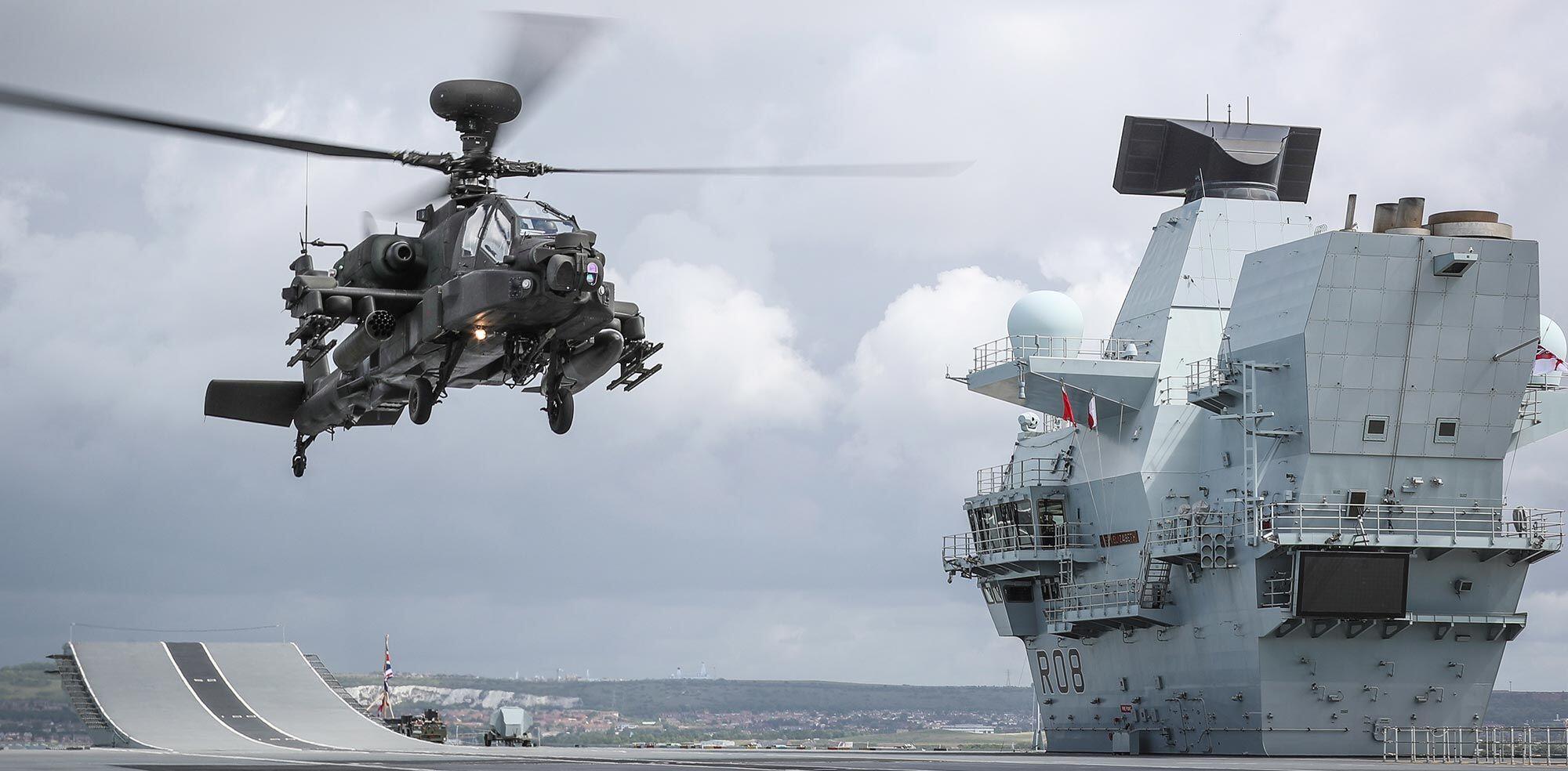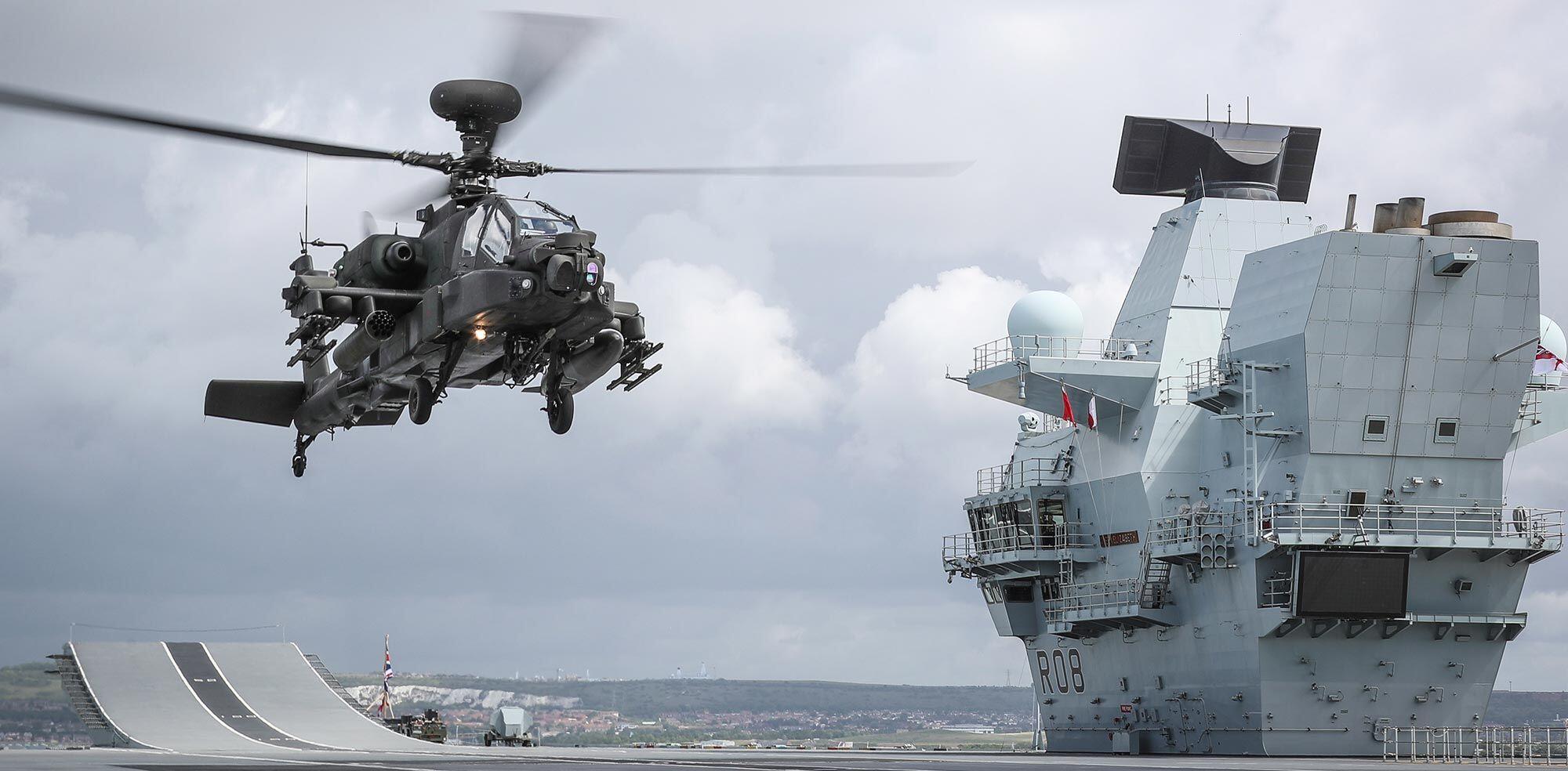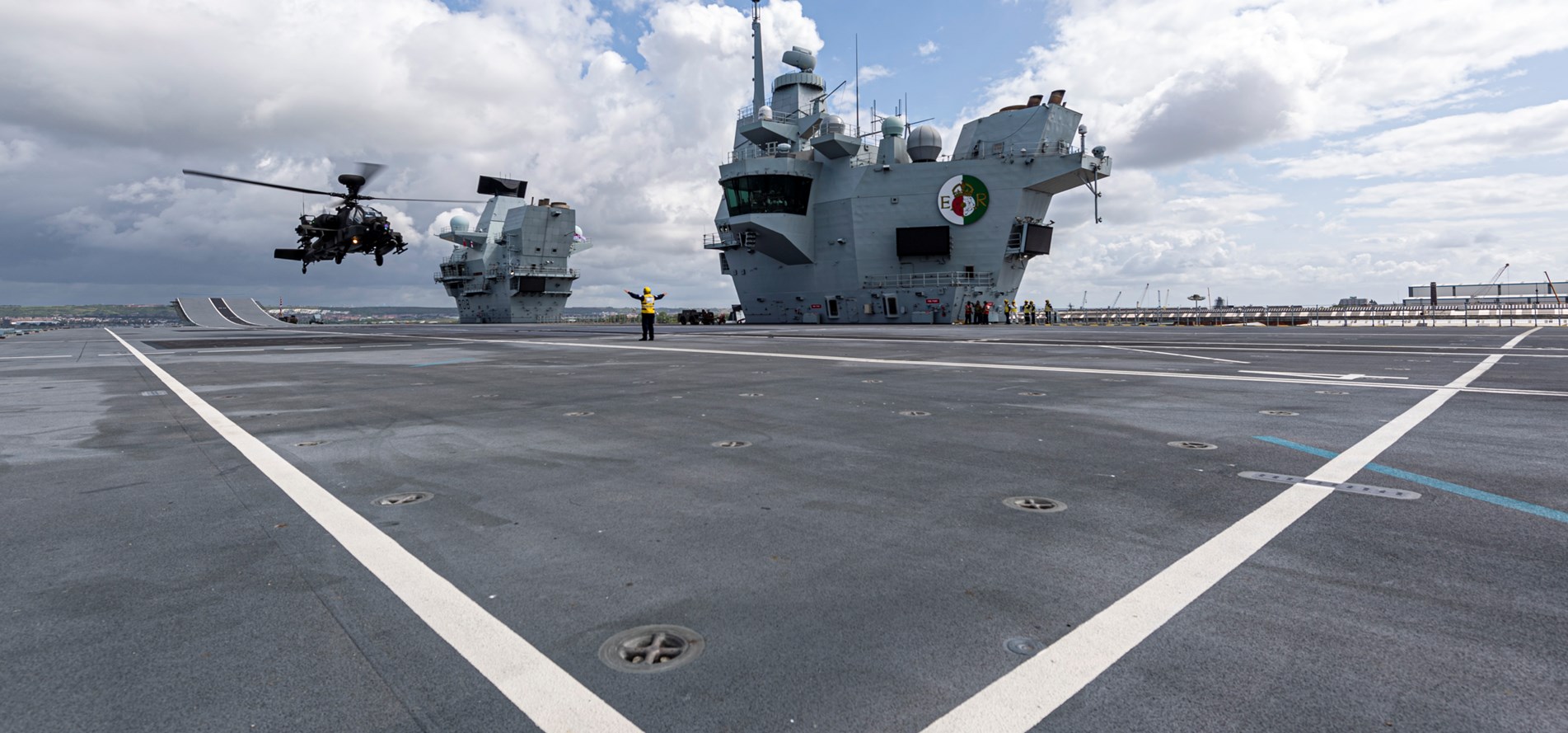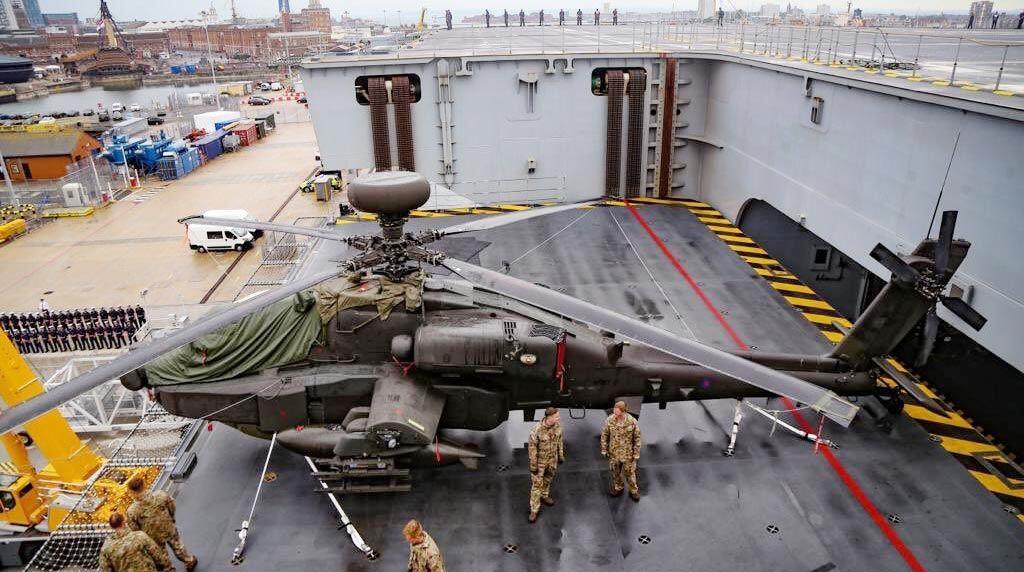
Agusta Westland Apache AH1 attack helicopters have landed on the British Royal Navy’s aircraft carrier HMS Queen Elizabeth for the first time, with the rotary wing aircraft expected to fulfil a complementary combat role to the fixed wing F-35B fighter jets providing the warship with a major enhancement to its ability to project force overseas. The British Army Air Corps currently fields over 60 AH1 aircraft, which differ from their better known American counterparts the AH-64 built by Boeing making use of a Rolls Royce engine, indigenous electronic ωɑɾʄɑɾε systems and folding blades – the last feature which makes them ideal for carrier deployments.The Apache AH-64 is a versatile attack helicopter widely used by various military forces around the world. The United Kingdom operates a fleet of Apache helicopters and the HMS Queen Elizabeth is the flagship aircraft carrier of the Royal Navy.

The deployment of the Apaches on the HMS Queen Elizabeth reportedly come as part of the 75 year commemoration of the D-Day landings, and took place eight months after the British warship deployed its first F-35B stealth jets. The HMS Queen Elizabeth was commissioned in December 2017, and represents the first ship of its class with a second, HMS Prince of Whales, set to enter service in the early 2020s. The carriers are intended to each deploy 48 aircraft, which alongside the F-35B and AH1 will include support helicopters such as the AW159 battlefield utility platform, the Chinook transport and the Merlin Crowsnest airborne early warning system.

While both the British carrier’s combat jets have now demonstrated their ability to deploy from the Queen Elizabeth Class, the Royal Navy remains constrained in its ability to rapidly build up a carrier air wing sufficient to project significant strength overseas. Captain Jerry Kyd, former commander of HMS Queen Elizabeth, commented in regards to this: “We are constrained by the F-35 buy rate even though that was accelerated in SDSR in 2015, so initial operating capability numbers in 2020 are going to be very modest indeed. We will flesh it out with helicopters, and a lot depends on how many USMC F-35s come on our first deployment in 2021. But by 2023, we are committed to 24 UK jets onboard, and after that it’s too far away to say.”

One result of this is that the U.S. Marine Corps has been invited to operate a unit of their own F-35B fighters from the HMS Queen Elizabeth, providing a much needed though temporary enhancement to its carrier air wing. With Britain demonstrating a high level of willingness to cooperate with the U.S. in expeditionary operations overseas, offering assistance in a potential attack on North Korea in 2017 and more recently deploying supporting units to the Persian Gulf against Iran, it remains strongly in the interests of the U.S. to augment its ally’s power projection capabilities. Lack of availability of F-35B jets, and prospects for significant cuts to British orders, have led the Queen Elizabeth Class to rely more heavy on the firepower of the Apache – despite its very different role.

This has led the warship’s role to be increasingly likened to a large helicopter carrier – with seven of the eight classes of aircraft it is designed to carry being rotary wing helicopters. Comparisons of the HMS Queen Elizabeth to a large helicopter carrier are based largely on its lack of catapults or even basic arresting gear, much like the Japanese Izumo Class or American Wasp Class, which restricts it to operating only a single class of fixed wing aircraft. The F-35B is the most expensive fighter in production anywhere in the world, and retains specialised short takeoff and vertical landing (STOVL) capabilities allowing it to operate without catapults or arresting gear.

The fighter was designed primarily for deployment from American Wasp and America Class helicopter carriers, but the limitations of the Queen Elizabeth Class have made the F-35B an ideal platform for the warships.





